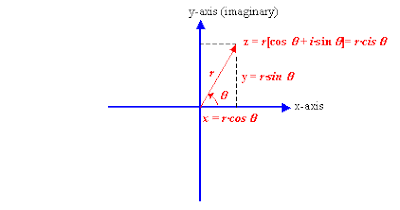After working with a student whose teacher has been covering trig identities for weeks (!), I was lucky enough to stumble on the way those abstract exercises were invented.
Trig functions (sine, cosine and tangent) are ratios of the sides of a right triangle, and there are certain relationships between them that can be exploited for fun and profit. For example, (sinA)2 + (cosA)2 = 1, so you can replace (sinA)2 with 1 - (cosA)2.
In the days before calculators, it was useful to be able to find the trig function of an angle just by knowing the function of a related angle, like half of A. These "double angle" formulas can be derived using a little algebra and geometry and are still trotted out in the 21st century:
sin2A = 2sinAcosA and cos2A = 2(cosA)2 - 1
I can see some value in not wanting to do integration on a function involving a square or a product, so being able to substitute a straight double angle function might be preferable. Of course, trig identities are taught long before calculus, so I have no idea what reason precalculus teachers give for still teaching them, other than they're (at best) interesting brainteasers.
The trig identities my student was being asked to prove were for larger angles, like 3A and 4A, requiring more algebra, and departing ever more from real applications. I wondered how mathematicians were able to discover a relation like cos4A = 8cos4A - 8cos2A + 1. Elsewhere, I've shown how we proved this identity using cos2A = 2(cosA)2 - 1 but after weeks of sleepless nights and cornea-searing research I finally found the mysterious trig identity generator.
Once mathematicians discovered how to deal with crazy numbers like the square root of -1 using algebraic shorthand, they quickly started playing around with coordinate systems to visualize the strange numbers.

As you can see in the figure above, any point can be expressed as r(cosA + i sinA) or rcisA. It seems like a long-winded way to express a number like (3, 4) or 3 + 4i, but the trig form has the advantage of being able to multiply, divide and take complex numbers to any exponent very easily. De Moivre's Theorem is the shortcut:
r1cisA * r2cisB = r1r2cis(A+B)
r1cisA / r2cisB = (r1/r2)cis(A-B)
and most importantly, (rcisA)n = rn (cos(nA) + i sin(nA))
Easy, huh? For example, taking r = 1 and n = 4:
(cosA + i sinA)4 = cos(4A) + i sin(4A)
This can be made easier using Pascal's Triangle to help expand (a + b)4:
(a + b)4 = a4 + 4a3b + 6a2b2 + 4ab3 + b4
Now replace a with cosA and b with i sinA:
cos4A + 4cos3A i sinA + 6cos2A i2 sin2A + 4cosA i3 sin3A + i4 sin4A
so cos(4A) + i sin(4A)
= cos4A + 4cos3A i sinA - 6cos2A sin2A - 4cosA i sin3A + sin4A
The real part of the left side of the equation must equal the real parts of the right side:
cos(4A) = cos4A - 6cos2A sin2A + sin4A
Now replace sin2A with 1 - cos2A:
cos(4A) = cos4A - 6cos2A (1 - cos2A) + (1 - cos2A)(1 - cos2A)
cos(4A) = cos4A - 6cos2A + 6cos4A + 1 - 2cos2A + cos4A
cos(4A) = 8cos4A - 8cos2A + 1
And that's how those sneaky mathematicians generated the identity my student and I worked so hard to prove. Next time: i is the square root of -1, but what is the square root of i??
No comments:
Post a Comment